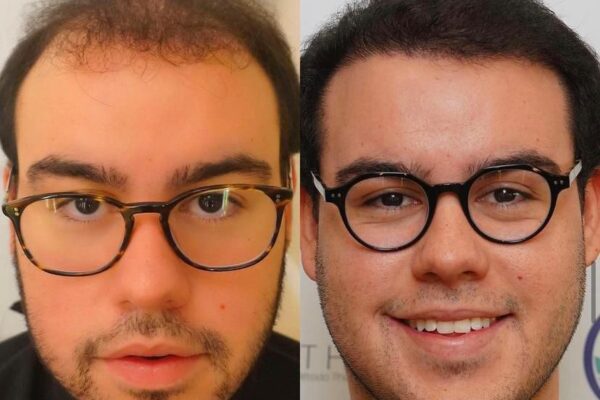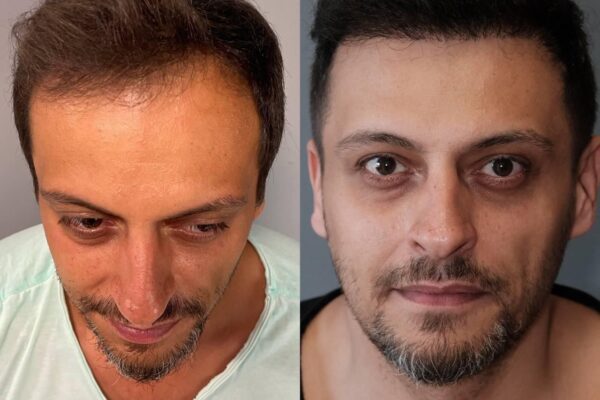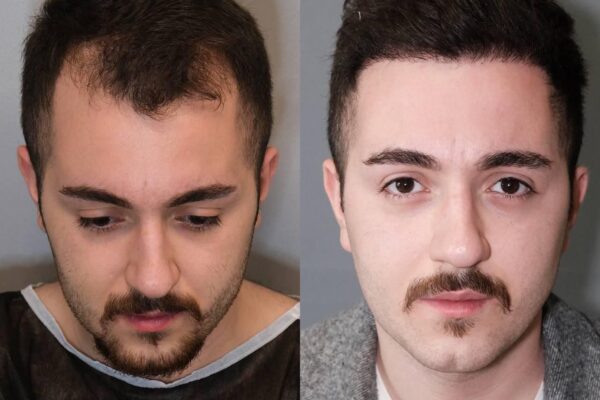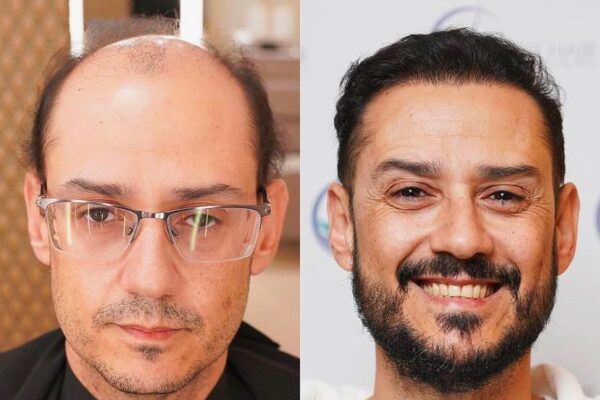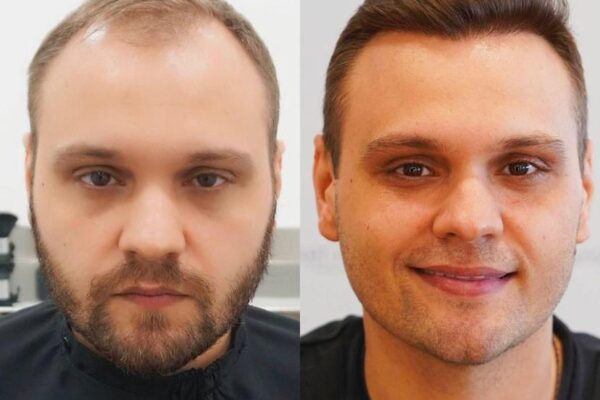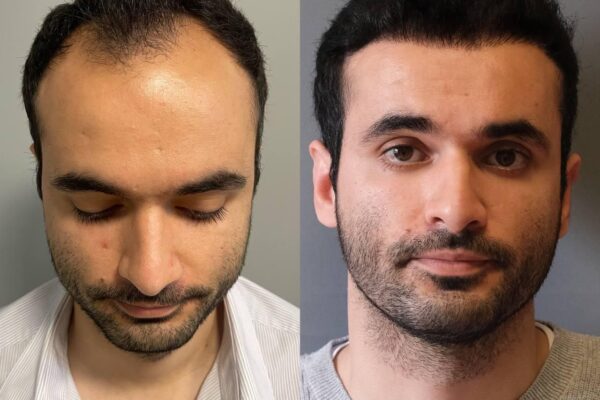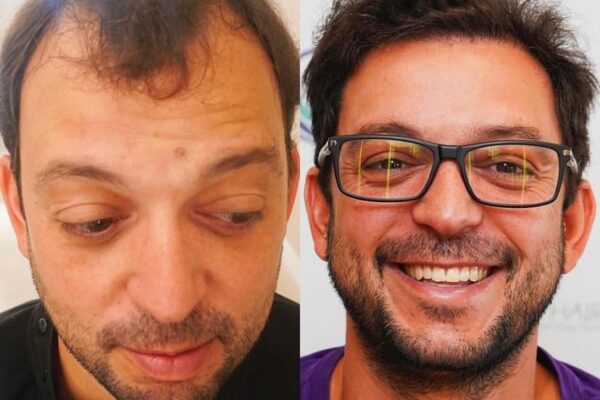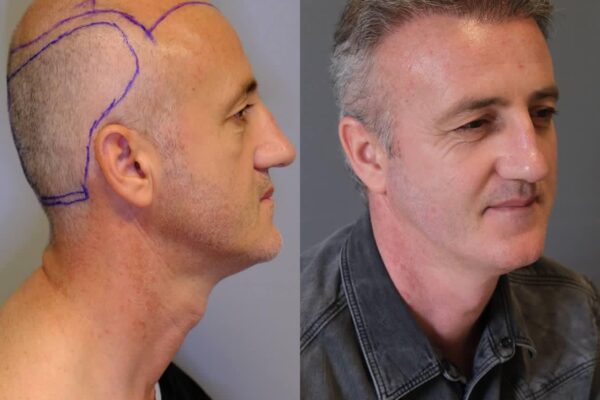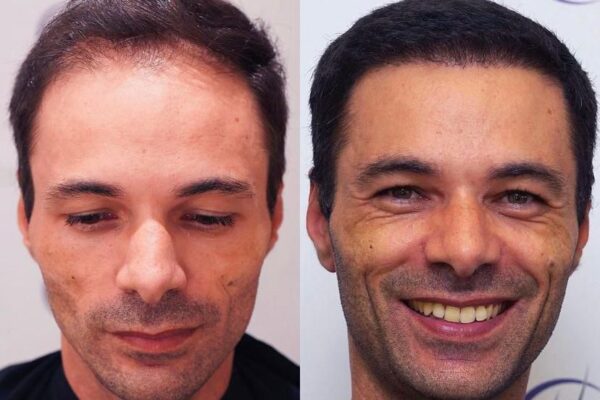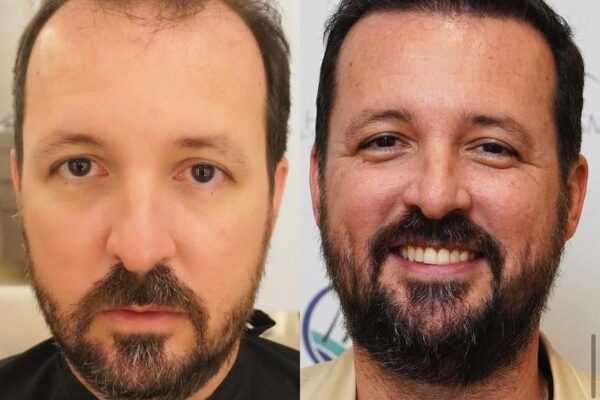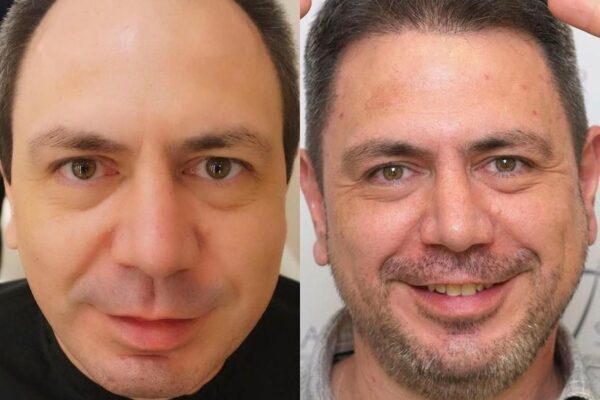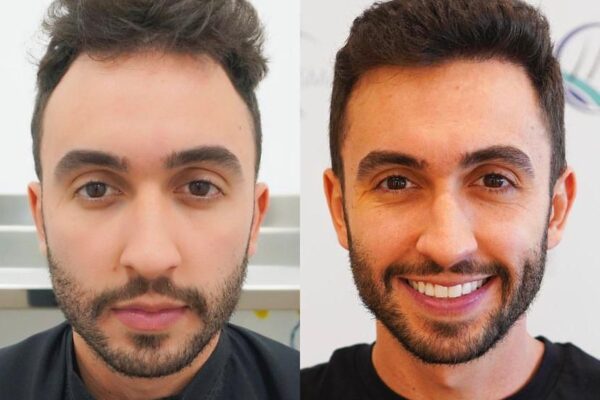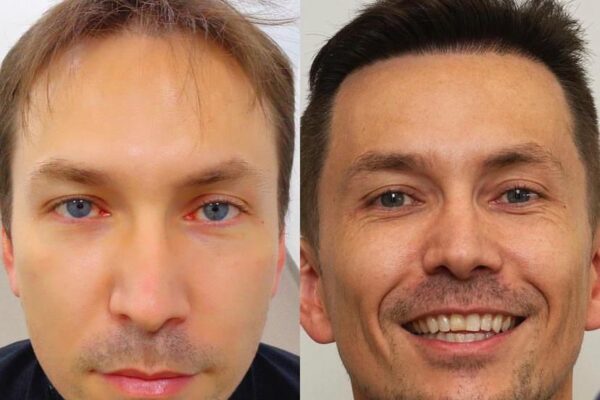
Hair Transplant
HERMES HEALTH
BEFORE/AFTER
Hair Transplant
Hair transplantation is a revolutionary surgical procedure that moves hair to bald or thinning areas of the scalp. This involves taking grafts, or small pieces of skin, from areas of the body that contain healthy hair. This is called the ‘donor’ site and is commonly the back of the scalp where hair tends to be thickest. The surgeon then moves the donor grafts to the hairless part of the scalp or the ‘recipient’ site. Once the transplanted skin heals, it will continue to grow hair.

A patient is likely to consider hair transplantation to help reverse causes of permanent hair loss:
- Autoimmune diseases that attack hair follicles
- Pattern baldness
- Thyroid diseases or other hormonal imbalances
- Traumatic injuries or burns
Benefits of hair transplantation include:
- Natural-looking results that are permanent
- Minimally invasive procedure
- Improved self-confidence and self-image
- Eliminate usage of over-the-counter or prescription medication, shampoos, creams, and/or other hair stimulants
Types of hair transplant procedures include:
- Follicular Unit Extraction (FUE): involves extraction of individual donor hair follicles using a small punch followed by transplantation to the recipient Results in smaller, scattered scar dots.
- Follicular Unit Strip Surgery (also called Follicular Unit Transplantation) (FUSS or FUT): involves removing a strip of scalp from the donor area, dissection of the strip into individual follicles, and eventually transplantation of the individual follicles to the recipient Results in a linear scar but can harvest more follicles in a single procedure.
- Micrografting: a variation of FUE where even smaller follicles are
- Direct Hair Transplantation (DHI): donor follicles are implanted directly into the recipient area without first creating a pre-made
- Strip Harvesting: newer technique that aims to minimize scarring and improve scar
Who performs hair transplants?
Hair transplantation may be performed by a skilled reconstructive plastic surgeon or a dermatologist.
What happens during hair transplantation?
The best type of hair transplant depends on individual facets such as the amount of hair loss, the desired aesthetic outcome, and patient preferences. The procedure scope and recovery time for hair transplantation varies depending on the technique used and the individual’s overall health. On average, the recovery time for hair transplantation can range from one to two weeks allowing at least three to four weeks before resumption of exercise or other strenuous activity. Final results can take up to a year to be fully visible.

